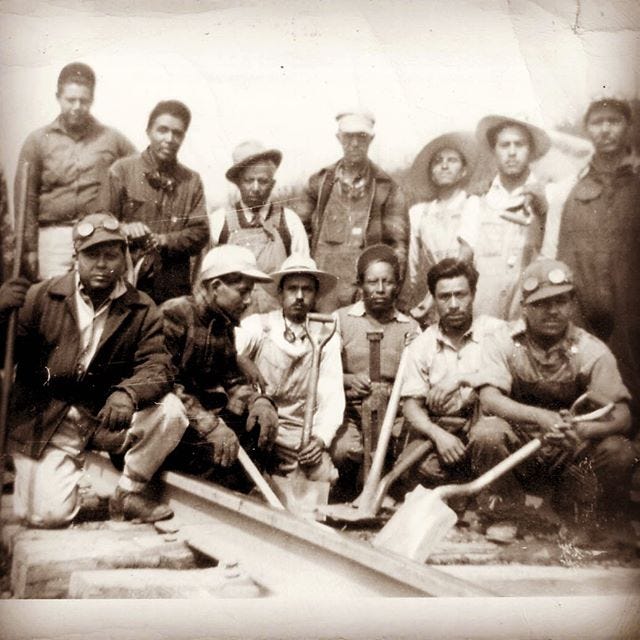What Year Did The Bracero Program End
Posted : adminOn 4/14/2018THE IMPACT OF THE BRACERO PROGRAMS ON A. The Bracero Program During World War II. This year there will be from 150,000 to 180,000 in Califor. The Bracero Program. The Bracero Program began on August 4, 1942 after the United States entered World War II. With American men going off to fight the war, the U.S. Needed farm laborers to tend to the growing demands of the agribusinesses supporting the war effort.


The Bracero program was small during the war years. A second response to the end of the Bracero program was labor-saving mechanization. When This Law Ended, What Happened to Mexican Immigration? Jeremy Rosenberg. Coincidentally or not, the Bracero Program began the same year.].
Click for HNN's Complete Coverage of the Bracero Program HNN Editor: At the recent GOP debate Donald Trump lauded the deportation of more than a million Mexicans in the 1950s under President Eisenhower. This article, published on HNN in 2006, puts the deportation into perspective. The US and Mexico shared a 2,000 border throughout the 20th century, but most Mexico-US migration occurred since 1980. Almost 6 million Mexicans were issued immigrant visas in the 20th century, and almost 4 million of these green cards were issued between 1980 and 2000. Similarly, over 40 million Mexicans illegally in the US were apprehended, and 26 million or two-thirds of these apprehensions occurred between 1980 and 2000. The Bracero (strong arm) program set the stage for large-scale legal and illegal Mexico-US migration.
Agriculture in California and the southwest began with the large acreages needed for dryland agriculture, which involved planting seed and harvesting wheat if there was sufficient rain as well as cattle grazing. When the transcontinental railroad in 1869 allowed California to take advantage of its Mediterranean climate and produce fruits and vegetables for consumers 3,000 miles away, large farms were expected to be broken up into family-sized units in order to get a labor force. This did not happen. Farmers found seasonal farm workers among the Chinese imported to build the railroad and shut out of cities by discrimination. Braceros were the last wave of immigrant farm workers who had no other US job option except working in the fields. In the spring of 1942, California farmers predicted that there would be labor shortages for the fall harvest because of conscription for World War II, and asked the US and Mexican governments to allow Mexicans to work seasonally on US farms. Free Program Ventus W194 Windows 7 Driver there.
Despite protests from US farm labor reformers that there was no shortage of workers, only a shortage of decent wages and working conditions, the US and Mexican governments signed a bilateral agreement in 1942 that allowed the entry of “native-born residents of North America, South America, and Central America, and the islands adjacent thereto, desiring to perform agricultural labor in the United States.” Between 1942 and 1964, some 4.6 million Mexicans were admitted to do farm work; many Mexicans returned year after year, but 1 to 2 million gained legal U.S. Work experience. The Bracero program was small during the war years. Admissions peaked at 62,000 in 1944, meaning that less than 2 percent of the 4 million U.S. Hired workers were Braceros.
The wartime Bracero program ended in 1947, and many Mexican workers elected to migrate illegally because such migration was tolerated. If they were apprehended inside the US, illegal Mexicans were legalized in a process that official U.S. Government publications called “drying out the wetbacks:” they were taken to the Mexico-US. Border, issued documentation, and returned to the farm on which they were found. There were no penalties for farmers for knowingly hiring unauthorized workers, and the number of “wetbacks” soon exceeded the number of legally admitted Braceros. A US government commission in 1951 recommended employer sanctions, imposing fines on US employers who knowingly hired illegal workers.
President Truman and the Mexican government endorsed the commission’s recommendation, but Congress did not, and the 1952 Immigration and Nationality Act that made harboring illegal aliens a felony included the so-called Texas proviso, which explained that employing an illegal alien was not harboring. There were thus no penalties on U.S. Employers who knowingly hired illegal workers. Citizen Burger Disorder Play Unblocked Online here. The Bracero program sowed the seeds for later Mexico-US.